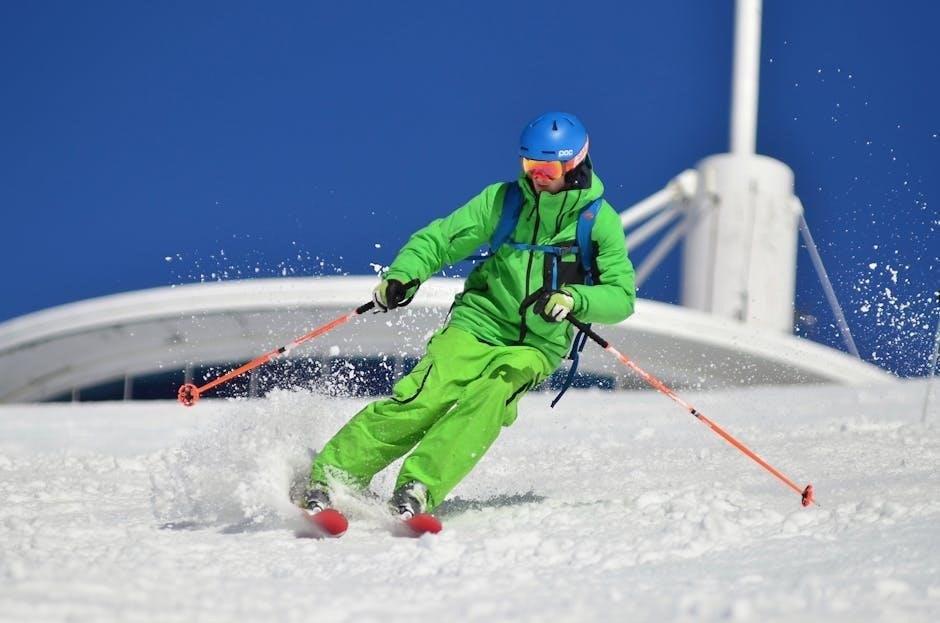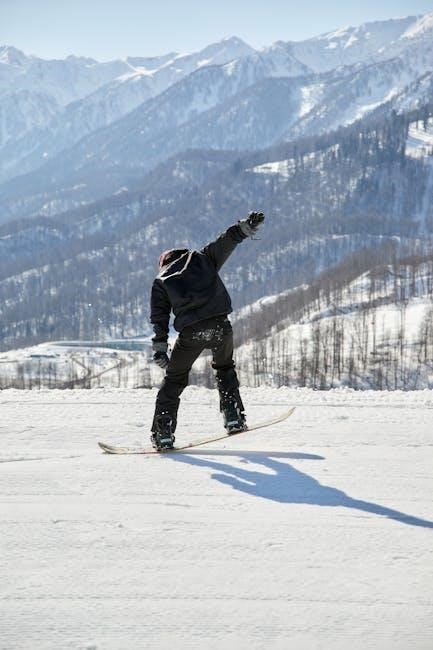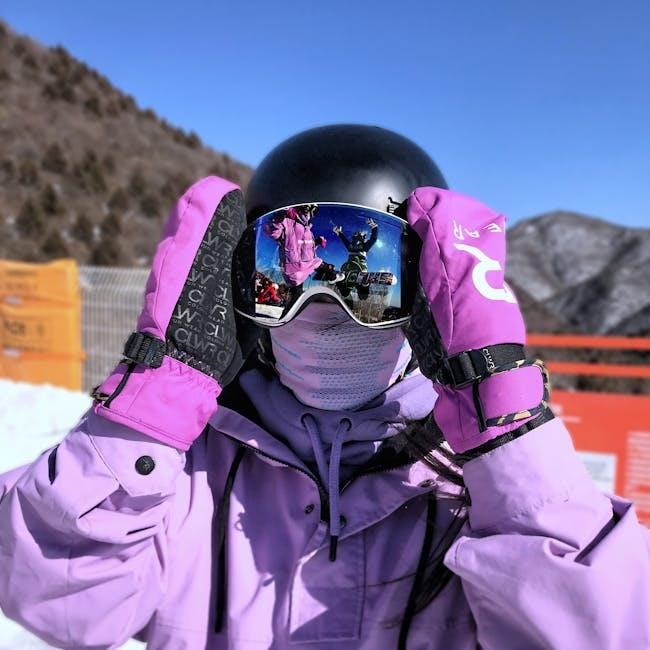Finding the perfect snowboard helmet size is crucial for safety and comfort on the slopes. This guide provides comprehensive information to help you choose the right helmet, ensuring a snug, secure fit for optimal protection during your snowboarding adventures.
Snowboard helmet sizing is a critical aspect of ensuring your safety while enjoying winter sports. A properly sized helmet provides optimal protection in the event of a fall or collision. Understanding the nuances of helmet sizing involves more than just grabbing a generic size off the shelf; it requires a precise measurement of your head circumference and a familiarity with brand-specific size charts.
Different manufacturers use varying sizing standards, so what might be a “medium” in one brand could be a “large” in another. This guide will walk you through the process of accurately measuring your head, interpreting size charts, and understanding the key fit points to look for when trying on a helmet.
We’ll explore the importance of a snug yet comfortable fit, how to adjust your helmet for optimal performance, and considerations for goggle compatibility. Whether you’re a beginner or an experienced rider, mastering snowboard helmet sizing is essential for your safety and overall enjoyment on the mountain. Always prioritize safety by ensuring your helmet fits correctly before hitting the slopes;
Why Correct Helmet Size Matters
The correct snowboard helmet size is paramount, acting as the first line of defense against potential head injuries. A helmet that’s too large will shift during a fall, potentially exposing your head to impact. Conversely, a helmet that’s too small will be uncomfortable and may not provide adequate coverage. A properly fitted helmet, however, sits snugly and securely, absorbing and dispersing impact forces effectively.
Beyond safety, comfort is another key factor. A well-fitting helmet allows you to focus on your riding without distractions. It should not create pressure points or cause discomfort, even after extended use. Moreover, a correctly sized helmet enhances your overall experience, ensuring compatibility with goggles and other headwear.
By choosing the right size, you maximize the helmet’s protective capabilities, ensuring it functions as designed. Ultimately, investing time in finding the correct helmet size is an investment in your safety and enjoyment on the slopes. Always prioritize a snug, comfortable fit that allows you to ride with confidence, knowing you’re well-protected. This ensures optimal safety and performance while snowboarding.
Measuring Your Head Circumference
Accurately measuring your head circumference is the first and most crucial step in selecting the right snowboard helmet size. This measurement will serve as the foundation for choosing a helmet that fits snugly and provides optimal protection.
To begin, you’ll need a flexible measuring tape; If you don’t have one, a string and a ruler will work as a substitute. Position yourself in front of a mirror to ensure accurate placement of the tape. Wrap the tape around your head, positioning it about one inch above your eyebrows and ears. The tape should be level around your head, not angled. Ensure the tape is snug but not too tight.
Once you’ve wrapped the tape, note the measurement in centimeters or inches, depending on the sizing chart you’ll be using; If you’re using a string, mark the point where the string meets, then measure that length with a ruler. It’s a good idea to take the measurement a couple of times to ensure accuracy. Record the largest measurement you obtain.
With your head circumference measurement in hand, you’re ready to consult the snowboard helmet size charts and find the perfect fit for your next snowboarding adventure.
General Snowboard Helmet Size Chart
While measuring your head circumference provides a precise starting point, a general size chart helps translate that measurement into a standard helmet size. Keep in mind that these charts offer approximate guidelines, as specific fits can vary between brands. Always consult the manufacturer’s size chart for the most accurate recommendation.
A typical snowboard helmet size chart breaks down as follows: Small helmets usually accommodate head circumferences of 51-55 cm (20-21.5 inches). Medium helmets typically fit head sizes ranging from 55-59 cm (21.5-23 inches). Large helmets are generally designed for head circumferences of 59-63 cm (23-24.5 inches). Extra-large helmets typically cater to head sizes of 63-66 cm (24.5-26 inches).
If your head circumference falls between two sizes, it’s generally recommended to opt for the larger size. Many helmets feature adjustable fit systems, like BOA, which allow you to fine-tune the fit for a snug and secure feel. It’s also wise to consider whether you plan to wear a beanie or balaclava under your helmet, as this can affect the overall fit.
Remember to view this chart as a reference point and prioritize checking the brand-specific size chart for optimal fit.
Brand-Specific Size Charts
While general size charts offer a helpful starting point, relying solely on them can lead to an ill-fitting helmet. Snowboard helmet sizing is not standardized across all manufacturers. Each brand utilizes its own molds and internal shapes, resulting in variations in how their helmets fit. Therefore, consulting the brand-specific size chart is crucial for accurate sizing.
These charts typically correlate head circumference measurements to specific helmet sizes (e.g., S, M, L, XL) offered by that particular brand. You can usually find these charts on the manufacturer’s website or product packaging. They provide precise measurements in centimeters or inches, ensuring you select the correct size for your head.
For instance, a medium-sized helmet from one brand might fit differently than a medium from another. Some brands may also offer intermediate sizes or different fit profiles (e.g., round vs. oval) to accommodate various head shapes. Checking the brand-specific chart will help you account for these nuances and achieve a comfortable, secure fit.
Always prioritize consulting the manufacturer’s size chart before making your purchase. This ensures you select a helmet that provides optimal protection and comfort on the slopes.
Trying on a Helmet: Key Fit Points
Once you’ve identified a potential size using the size chart, the next crucial step is physically trying on the helmet. Pay close attention to several key fit points to ensure optimal comfort and protection. The helmet should sit level on your head, covering your forehead and extending down to about an inch above your eyebrows.
Check for pressure points. The helmet should feel snug but not too tight, without any uncomfortable squeezing or pressure concentrated in specific areas. If you experience pressure points, try a different size or model. Ensure the helmet doesn’t move excessively when you shake your head. A good fit means the helmet moves with your head, not independently.
Also, examine the helmet’s interior. The internal padding should make consistent contact with your head. Gaps between the padding and your head indicate a poor fit. Pay attention to the ear pads; they should sit comfortably over your ears without causing discomfort. The chin strap should also fasten securely and comfortably beneath your chin, without pinching or restricting movement.
Remember, a properly fitted helmet is essential for safety. Don’t hesitate to spend time trying on different sizes and models to find the one that fits you best.

Checking the Fit: Snugness and Movement
After initially trying on a helmet, it’s crucial to rigorously check the fit to ensure it provides adequate protection and comfort. Start by assessing the overall snugness. The helmet should feel secure around your head, making consistent contact without being overly tight or causing pressure points. A good fit is snug, not constricting.
Next, evaluate the helmet’s movement. With the chin strap unbuckled, gently shake your head from side to side and forward and backward. The helmet should move with your head; any independent movement indicates a loose fit. If the helmet shifts noticeably, try a smaller size or adjust the fit system if available.
Also, try pushing the helmet up from the front and back edges. A well-fitted helmet should resist this movement. Excessive upward movement suggests the helmet is too large. Finally, with the chin strap buckled, ensure you can comfortably fit no more than one or two fingers between the strap and your chin. The strap should be snug enough to keep the helmet in place during a fall but not so tight as to restrict breathing or movement. A correctly fitted helmet is paramount for optimal safety.
Adjusting the Helmet for Optimal Fit
Once you’ve selected a helmet that seems close to your size, fine-tuning the fit is essential for optimal comfort and safety. Most modern snowboard helmets come equipped with adjustable fit systems, typically a dial located at the back of the helmet. This dial allows you to tighten or loosen the internal harness, customizing the fit to your head shape.
Start by loosening the dial completely, then place the helmet on your head. Gradually tighten the dial until the helmet feels snug and secure. The goal is to achieve even pressure around your head without any pressure points. If you experience discomfort in specific areas, try loosening the dial slightly or repositioning the helmet.
Some helmets also include adjustable cheek pads or liners. Experiment with these options to further refine the fit and ensure the helmet sits comfortably on your face. Remember, a properly adjusted helmet should stay firmly in place during activity, offering maximum protection in case of a fall. Regularly check and readjust the fit system throughout the day, as temperature changes or the addition of headwear can affect the helmet’s snugness.
Helmets and Goggle Compatibility
Ensuring proper compatibility between your snowboard helmet and goggles is crucial for both comfort and performance on the slopes. A good fit minimizes gaps that can expose your forehead to cold air and snow, enhancing your overall experience.
When selecting a helmet, consider bringing your goggles along to try them together. The top edge of your goggles should sit flush against the brim of the helmet, creating a seamless seal. A noticeable gap, often referred to as “gaper gap,” can lead to discomfort and fogging issues.
Many helmet manufacturers design their products with specific goggle compatibility in mind. Look for helmets with adjustable brims or integrated goggle clips to fine-tune the fit. Some helmets even feature ventilation systems that work in tandem with goggle vents to reduce fogging.

If you’re purchasing new goggles, research brands that are known for their compatibility with your helmet brand. Reading reviews and seeking recommendations from experienced snowboarders can also provide valuable insights. Ultimately, the goal is to achieve a comfortable, secure fit that eliminates gaps and maximizes visibility.

Helmets and Headwear (Beanies, Balaclavas)
The use of headwear such as beanies or balaclavas under a snowboard helmet can affect the helmet’s fit and performance; While some riders prefer the added warmth or moisture-wicking properties, it’s crucial to consider the impact on safety.
If you plan to wear a beanie or balaclava regularly, try it on with the helmet during the fitting process. The added layer should not compromise the helmet’s snugness or prevent proper adjustment. A helmet that feels tight with headwear may be too small, while one that feels loose may not provide adequate protection in a fall.
Thin beanies or balaclavas designed specifically for helmet compatibility are often the best choice. These options provide warmth without adding excessive bulk. Avoid thick or bulky headwear that can interfere with the helmet’s fit and ventilation.
Adjust the helmet’s fit system after adding headwear to ensure a secure and comfortable fit. The helmet should still sit level on your head and not rock back and forth. Remember that a properly fitted helmet is essential for safety, so prioritize fit over personal preference when choosing headwear.
When to Replace Your Helmet
A snowboard helmet is designed to protect your head during a single significant impact. After such an impact, the helmet’s protective structure may be compromised, even if there is no visible damage. Therefore, it’s crucial to replace your helmet after any crash involving a head impact.
Even without a major impact, snowboard helmets degrade over time. The EPS foam liner can compress and lose its ability to absorb energy effectively. Manufacturers typically recommend replacing your helmet every three to five years, depending on usage and storage conditions.

Regularly inspect your helmet for signs of wear and tear, such as cracks, dents, or delamination of the shell. Exposure to sunlight, heat, and chemicals can also degrade the helmet’s materials. If you notice any of these issues, it’s time for a replacement.
Proper storage can extend the lifespan of your helmet. Store it in a cool, dry place away from direct sunlight and extreme temperatures. Avoid storing it in a gear bag where it can be crushed or damaged.
When replacing your helmet, choose a new one that meets current safety standards and fits properly. Don’t compromise on safety—your head is worth it.
